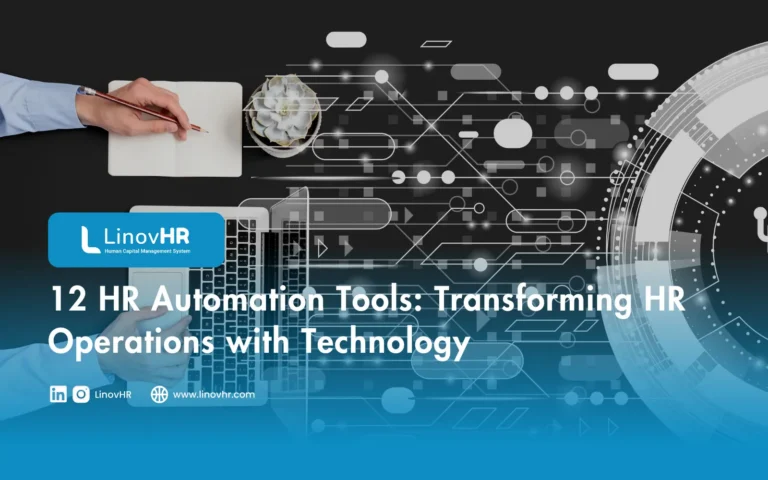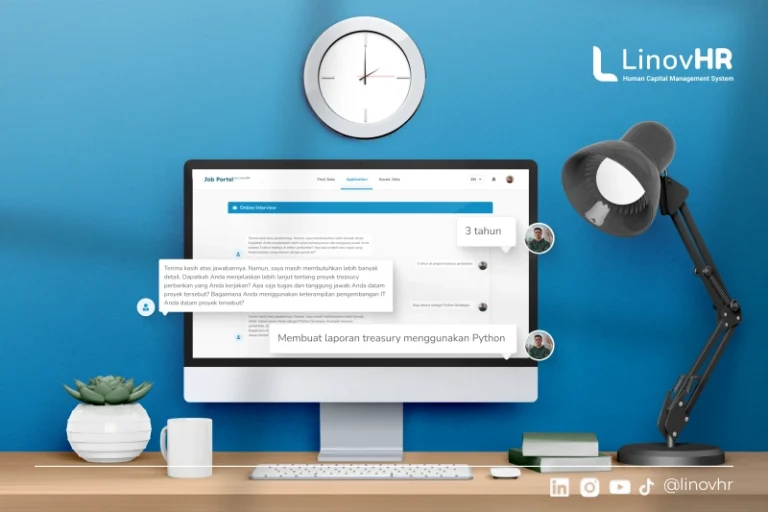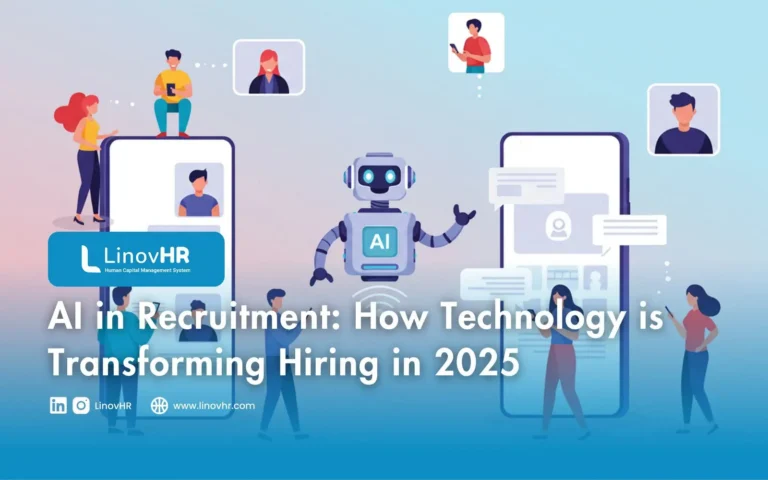Human resource management is evolving rapidly, and HR teams are increasingly leveraging technology to streamline their operations.
HR automation tools enable companies to automate routine tasks, reduce administrative errors, and focus on strategic initiatives like talent development and employee engagement.
In this article, we will explore the concept of HR automation, present the 12 best HR automation tools for 2025, and provide guidance on selecting the right platform for your company.
Understanding HR Automation Tools and Their Benefits
HR automation tools are software solutions designed to automate and simplify HR processes, ranging from payroll and attendance management to recruitment, performance tracking, and learning management.
By centralizing all HR-related tasks in a single platform, these tools reduce manual administrative work, minimize errors, and enhance operational efficiency.
Companies of all sizes, especially SMEs, can benefit from streamlined workflows and improved employee satisfaction through HR automation tools.
The benefits of HR automation tools extend beyond mere efficiency. With integrated analytics and reporting capabilities, HR teams gain insights into workforce performance, identify trends, and make data-driven decisions.
Automation also allows employees to access self-service portals to manage their own HR-related tasks, fostering transparency and engagement. For business owners, HR automation tools offer a clearer view of organizational structures, labor costs, and workforce productivity.
Modern HR automation tools often incorporate cloud technology, mobile accessibility, and AI-driven analytics. Cloud-based solutions enable real-time updates and remote access, while AI functionalities help optimize payroll, recruitment, and performance evaluation.
Implementing HR automation tools empowers companies to focus on strategic initiatives, reduce operational costs, and enhance employee experience across all departments.
Best 12 HR Automation Tools for 2025
The following HR automation tools are highly recommended for companies looking to modernize their HR operations. Each platform offers unique features to address specific business needs.
1. LinovHR
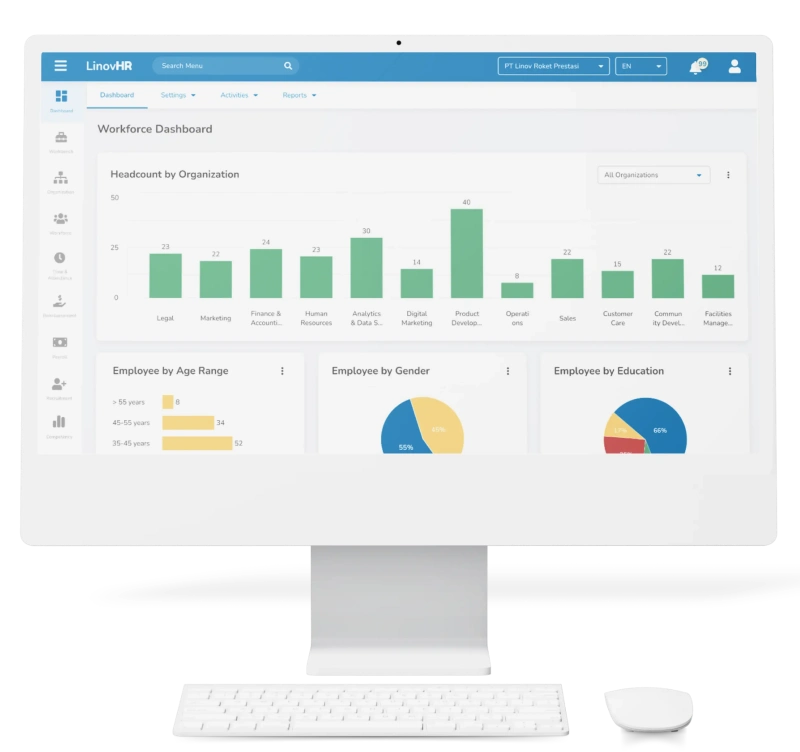
LinovHR is the most comprehensive HR automation tool available in Indonesia. It provides end-to-end automation for payroll, attendance, recruitment, performance management, and employee self-service.
Designed for both SMEs and large enterprises, LinovHR combines local compliance with a scalable cloud and on-premise system. Its intuitive dashboard integrates multiple HR functions, allowing HR teams to manage all operations from a single platform.
In addition to essential HR features, LinovHR also provides modules like succession management, career path mapping, and learning management, empowering organizations to build a sustainable and growth-oriented workforce.
Key features of LinovHR’s HR automation tools:
- Organization Management: Helps companies structure departments, roles, and reporting lines digitally for clear workflow management.
- Personnel Administration: Centralizes all employee data, including biodata, contracts, and employment status in one secure system.
- Time Management: Tracks attendance, overtime, and leave to improve workforce scheduling and payroll accuracy.
- Mobile Attendance: Allows employees to clock in and out via mobile app with GPS, face recognition, and anti-fraud features.
- Payroll: Automates salary, tax, and deduction calculations to ensure accuracy and compliance.
- Reimbursement: Simplifies employee expense submissions and approval workflows for better transparency.
- Loan: Manages employee loans and repayment schedules easily within the HR system.
- Employee Self-Service: Enables employees to manage leave, payslips, and personal data anytime through web or mobile.
- Recruitment: Streamlines hiring, from job posting to onboarding, to attract and manage candidates efficiently.
- Competency Management: Assesses employee skills and identifies training needs to support performance improvement.
- Career Path: Maps career progression and promotion opportunities to boost employee motivation.
- Succession Management: Identifies and develops future leaders to maintain business continuity.
- Learning Management System: Delivers and tracks employee training programs to support continuous learning.
| No. | Pros | Cons |
| 1. | Fully integrated HR automation tool with comprehensive modules | Requires initial training for full utilization |
| 2. | Localized for Indonesian labor and tax compliance | Broad functionality may feel complex at the first |
| 3. | Offers both cloud and on-premise deployment | |
| 4. | Real-time analytics for better decision making | |
| 5. | Scalable for SMEs and large enterprises | |
| 6. | Advanced employee self-service and mobile access | |
| 7. | Strong customer support and customization options | |
| 8. | Free demo request available for the first 6 months. |
2. HiBob
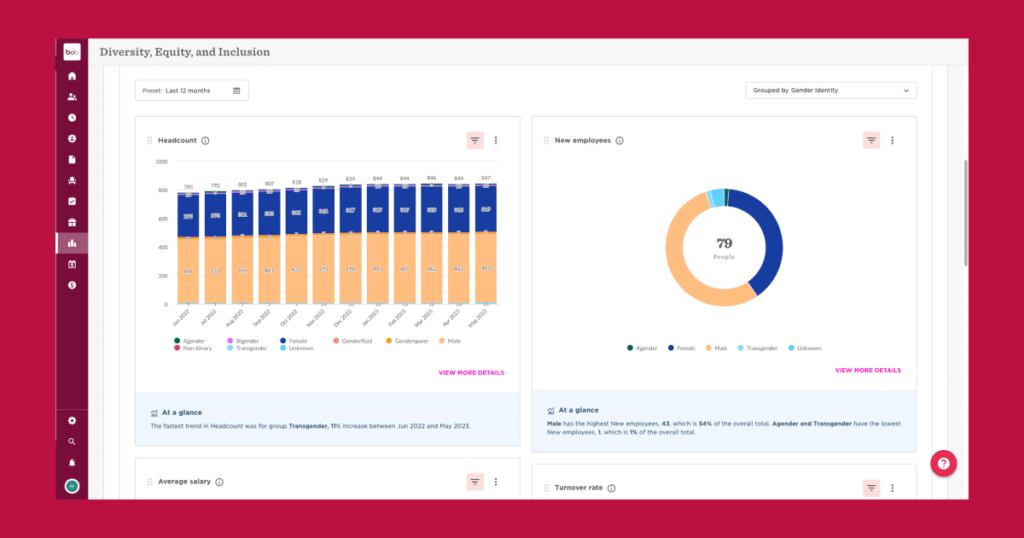
HiBob is one of the most people-centric HR automation tools designed to simplify HR processes for fast-growing companies.
The platform focuses on improving employee engagement and culture while automating administrative HR tasks such as onboarding, time tracking, and performance reviews.
Key features of HiBob’s HR automation tools:
- Employee lifecycle automation
- Performance management and surveys
- People analytics and insights
- Advanced onboarding tools
| No. | Pros | Cons |
| 1. | Intuitive and modern interface | Higher pricing for small businesses |
| 2. | Strong analytics for employee engagement | Limited customization for smaller teams |
| 3. | Efficient automation of HR tasks | Some features require add ons |
3. Deel
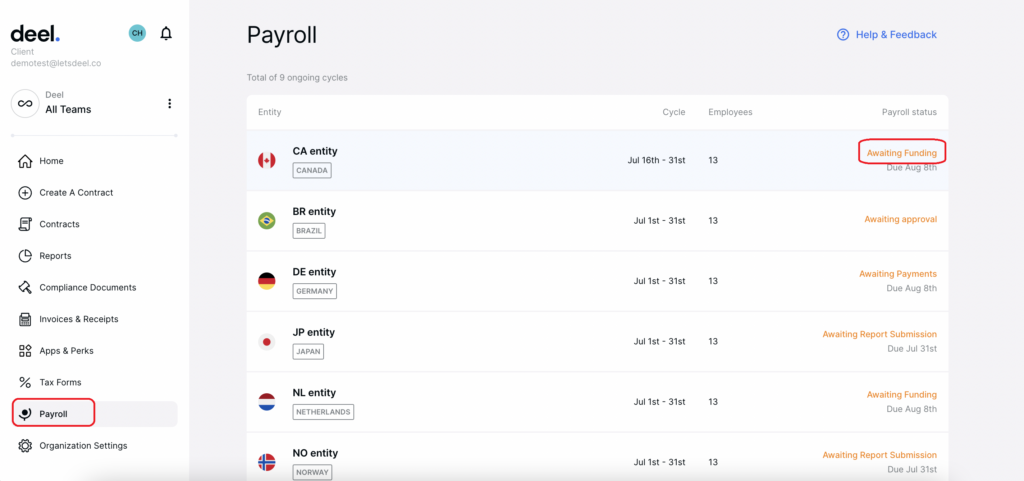
Deel is one of the leading HR automation tools for global workforce management. Deel also offers localized contracts, tax management, and expense automation.
It helps businesses hire, pay, and manage international employees and contractors while ensuring compliance with local regulations.
Key features of Deel’s HR automation tools:
- Payroll and compliance
- Expense and invoice automation
- Contractor management
| No. | Pros | Cons |
| 1. | Ideal for remote or global teams | Pricing can be high for smaller companies |
| 2. | Automates compliance and payroll | Limited local HR modules outside payroll |
| 3. | Easy integration with other tools | Some features require advanced configuration |
4. BambooHR
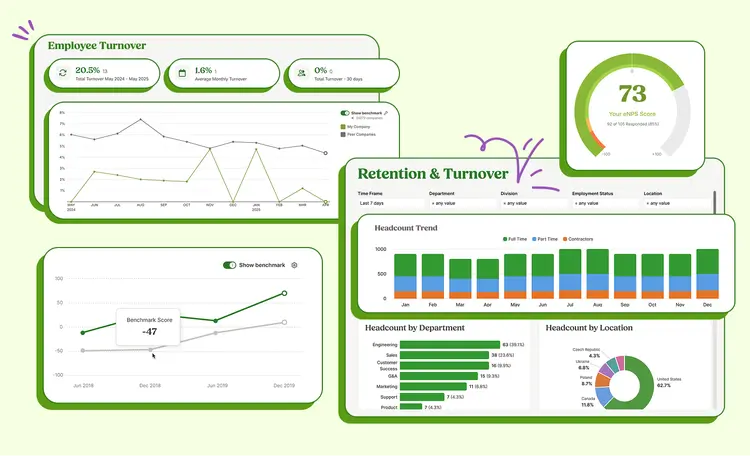
BambooHR is one of the most trusted HR automation tools for small and medium sized businesses.
It centralizes employee information and automates time-off tracking, document management, and reporting. The platform stands out for its intuitive design and strong focus on user experience.
Key features of BambooHR’s HR automation tools:
- HR database management
- Time off and attendance tracking
- Reporting and analytics
- Onboarding and offboarding workflows
| No. | Pros | Cons |
| 1. | Intuitive and interface easy to use | Limited payroll support outside the U.S. |
| 2. | Efficient automation of HR tasks | Lacks local compliance for some countries |
| 3. | Good reporting and analytics | Pricing can be high for smaller companies |
5. HashMicro
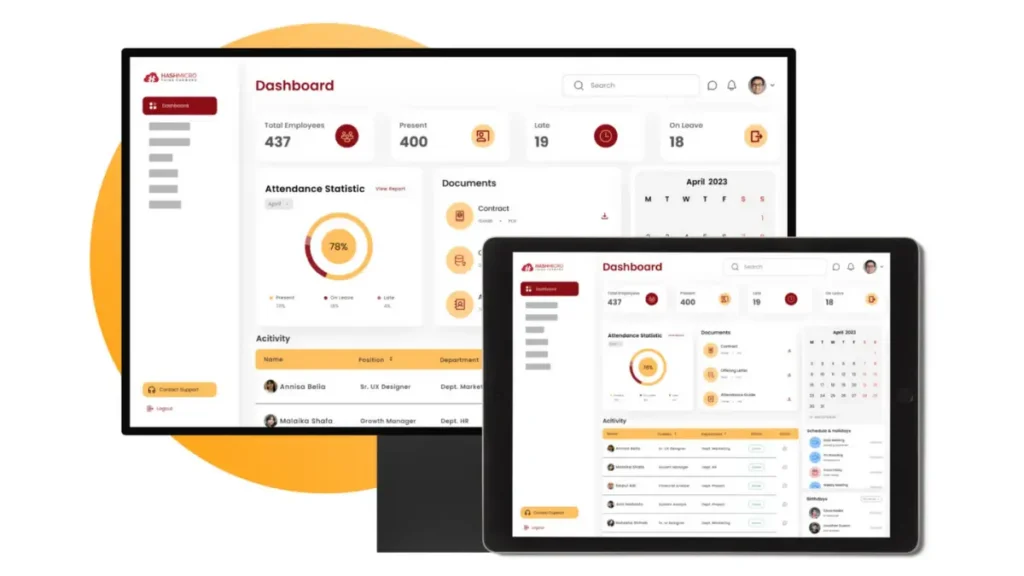
HashMicro provides an ERP system with a powerful HR module, making it an effective HR automation tool for companies seeking full integration. It automates payroll, recruitment, performance, and attendance management while reducing manual workload.
The platform is highly customizable, enabling businesses to tailor workflows and reports according to their specific HR needs.
Key features of HashMicro’s HR automation tools:
- Payroll automation
- Attendance and leave management
- Recruitment and applicant tracking
- Performance management
| No. | Pros | Cons |
| 1. | Complete ERP integration | Complex for small businesses |
| 2. | Highly customizable workflows | Requires IT support for setup |
| 3. | Real-time reporting and analytics | Higher pricing tiers |
6. ADP Workforce Now
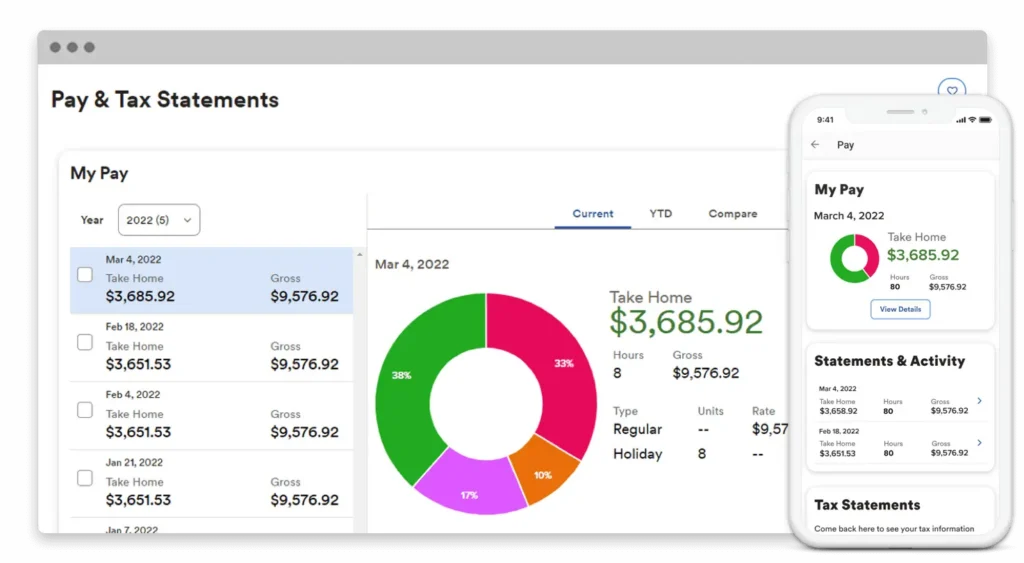
ADP Workforce Now is one of the most established HR automation tools trusted by large enterprises. It provides end-to-end HR automation, from payroll and time tracking to talent management and compliance.
Its analytics dashboard delivers deep insights into workforce trends, helping HR leaders make informed decisions. ADP also offers excellent scalability for growing businesses.
Key features of ADP Workforce Now’s HR automation tools:
- Payroll and time management
- Benefits administration
- Talent acquisition and performance tracking
| No. | Pros | Cons |
| 1. | Comprehensive payroll and HR functions | Higher cost for small businesses |
| 2. | Scalable for large companies | Learning curve for new users |
| 3. | Strong compliance tools | Limited customization for smaller teams |
7. Monday.com
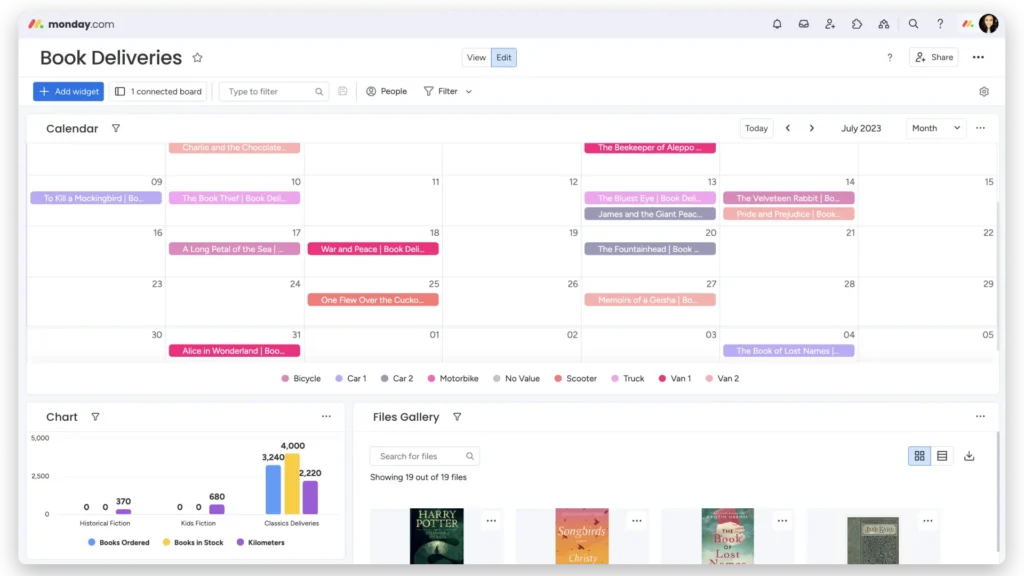
While widely known as a project management platform, Monday.com has evolved into one of the most versatile HR automation tools.
The platform’s visual dashboards make HR data easy to monitor, while integrations with tools like Slack and Gmail enhance team collaboration.
Key features of Monday.com’s HR automation tools:
- Recruitment and onboarding templates
- Time tracking and task assignments
- Workflow automation builder
| No. | Pros | Cons |
| 1. | Highly customizable workflows | Not fully focused on traditional HR modules |
| 2. | Strong collaboration features | Can be complex for beginners |
| 3. | Integrates with multiple apps | Limited payroll features |
8. Sage HR
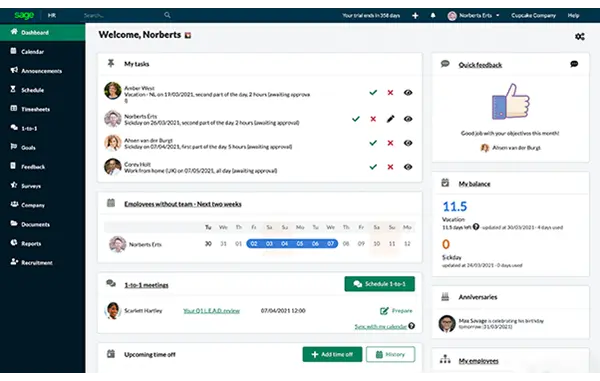
Sage HR is a cloud-based HR automation tool tailored for small and mid-sized companies. It automates HR tasks such as leave tracking, performance reviews, and expense management while providing an intuitive interface.
Its automation workflows help businesses reduce time spent on manual HR operations and improve employee experience.
Key features of Sage HR’s HR automation tools:
- Leave and attendance automation
- Expense management
- Performance appraisal system
| No. | Pros | Cons |
| 1. | Interface easy to use | Limited advanced analytics |
| 2. | Employee self-service feature | Less suitable for large enterprises |
| 3. | Automates routine HR tasks | Limited integration options |
9. Namely
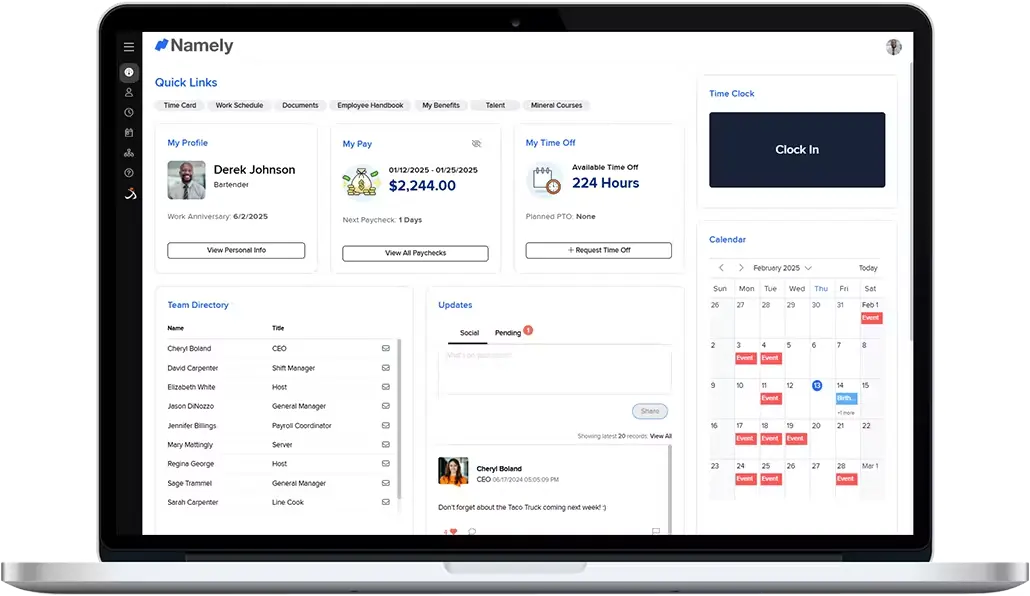
Namely is one of the most people-focused HR automation tools for mid-sized businesses. It offers an integrated system for payroll, benefits, performance, and compliance all in one platform.
With a strong emphasis on employee experience, Namely combines automation with social HR features to foster engagement and collaboration.
Key features of Namely’s HR automation tools:
- Payroll and benefits administration
- Compliance automation
- Performance management
| No. | Pros | Cons |
| 1. | Intuitive and user friendly | Pricing may be high for small businesses |
| 2. | Integrated payroll and HR | Some featured limited to US based compliance |
| 3. | Employee self-service portal | Advanced customization requires technical support |
10. Rippling
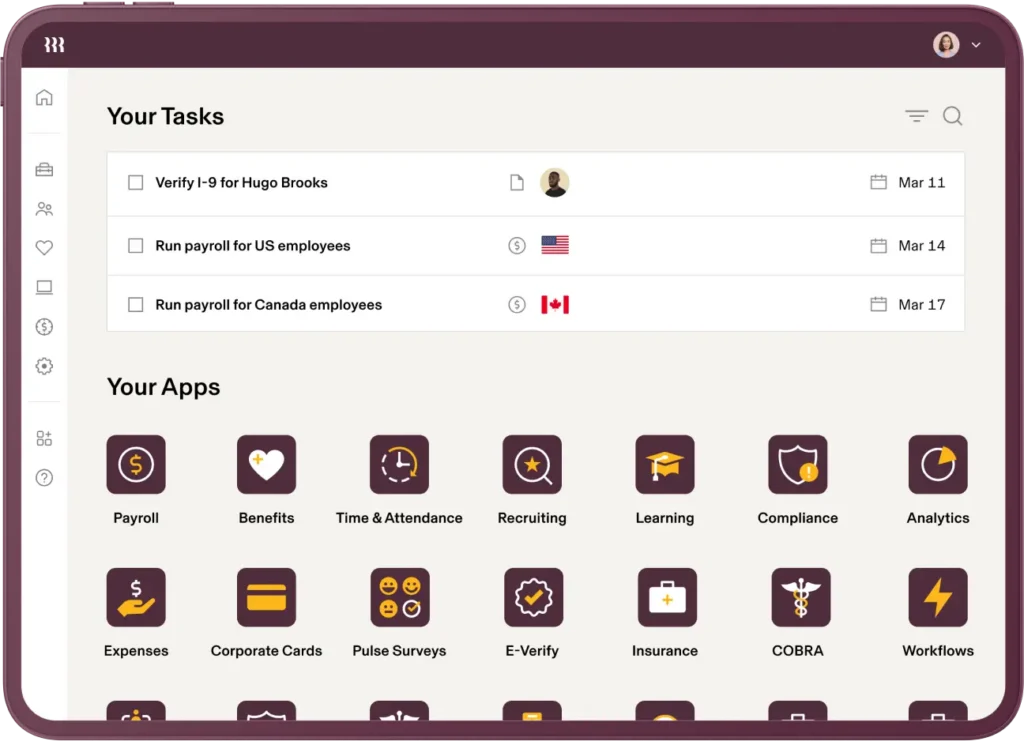
Rippling combines HR automation tools and IT management in a single integrated platform. The standout feature of Rippling is its ability to sync employee data across multiple systems automatically, reducing the need for manual updates and improving accuracy across departments.
Key features of Rippling’s HR automation tools:
- Employee onboarding
- Payroll and benefits administration
- Compliance management
| No. | Pros | Cons |
| 1. | Combines HR and IT management | Can be expensive for smaller businesses |
| 2. | Integrates with 500+ apps | Some features require add ons |
| 3. | Automates onboarding and payroll | Learning curve for complex workflows |
11. Zoho People
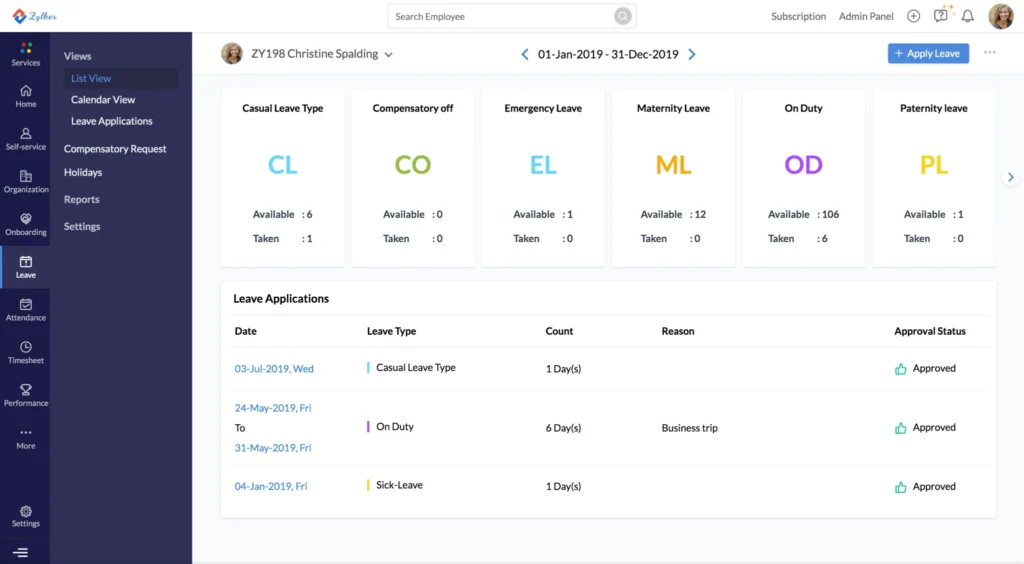
Zoho People is a flexible and affordable HR automation tool that caters to companies of all sizes.
Its modular structure allows organizations to start small and expand as their HR needs grow. The tool’s cloud-based system also ensures secure and remote accessibility for all users.
Key features of Zoho People’s HR automation tools:
- Employee database and attendance tracking
- Performance appraisals
- Leave management
| No. | Pros | Cons |
| 1. | Affordable pricing | Limited advanced analytics |
| 2. | Strong integration with zoho ecosystem | Interface less intuitive for some users |
| 3. | Easy to scale | Payroll features may be limited |
12. Paycor
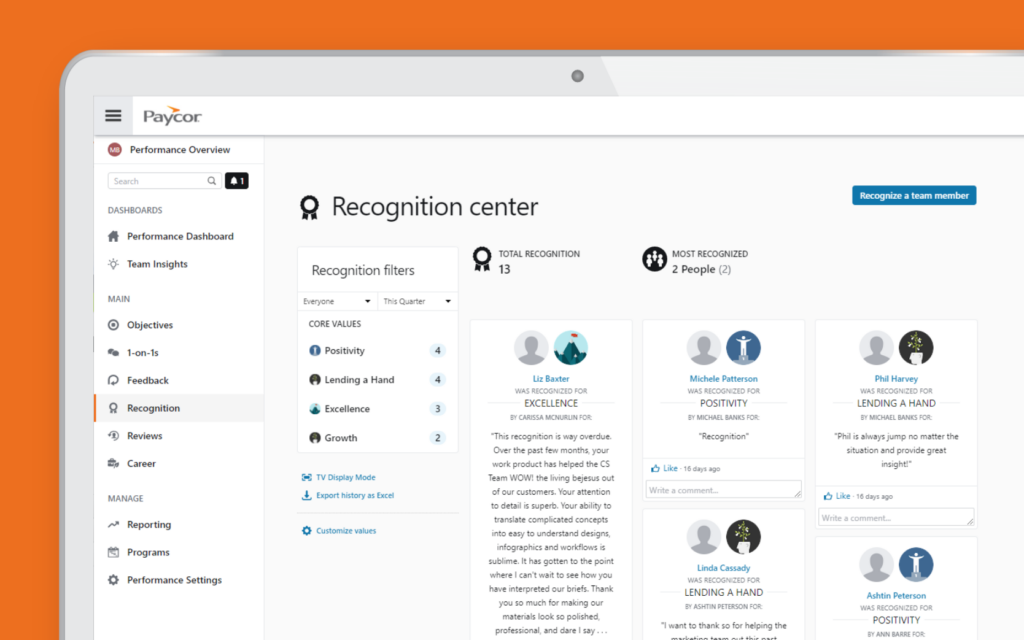
Paycor is an all-in-one HR automation tool that helps HR leaders streamline payroll, timekeeping, recruiting, and employee engagement.
It is particularly strong in workforce analytics and compliance management. Paycor’s automation capabilities reduce repetitive HR tasks, helping teams stay compliant and efficient.
Key features of Paycor’s HR automation tools:
- Payroll and tax automation
- Workforce analytics
- Learning management tools
| No. | Pros | Cons |
| 1. | All in one platform | Higher subscription cost for smaller businesses |
| 2. | Real-time analytics and dashboards | Some features require extra modules |
| 3. | Mobile access for employees | Implementation can take time |
How to Choose the Right HR Automation Tool
Choosing the right HR automation tools is essential for optimizing HR operations and ensuring a smooth experience for both HR teams and employees.
1. Assess Your HR Needs Thoroughly
Begin by identifying the main HR challenges your company faces. Are you struggling with payroll accuracy, leave management, recruitment tracking, or employee performance monitoring?
Understanding your priorities will help you select an HR automation tool with relevant features, avoiding unnecessary add-ons and complex systems that your team may not use.
2. Evaluate Integration and Scalability
A good HR automation tool should seamlessly integrate with your existing systems such as accounting, project management, or CRM platforms.
Scalability is also crucial. Your chosen solution should grow with your business, accommodating more employees, additional modules, or advanced analytics as your company expands.
3. Ensure Compliance and Security
HR automation tools often handle sensitive employee data. Make sure the platform complies with local labor laws and data protection regulations.
For companies in Indonesia, features like automated PPh 21 reporting, BPJS integration, and secure cloud storage are essential to ensure legal compliance and reduce administrative risk.
4. Consider User Experience and Accessibility
The tool should be intuitive and easy for both HR teams and employees to navigate. Mobile accessibility, self-service options, and user-friendly dashboards help improve adoption rates and engagement, making HR processes faster, more transparent, and less error prone.
5. Analyze Reporting and Analytics Capabilities
Modern HR automation tools offer reporting and analytics to monitor key metrics like attendance, turnover, and performance trends.
Choose a platform that provides real-time insights, customizable dashboards, and actionable data to support strategic HR decisions.
Also read: HR Strategy: Aligning People Power with Business Purpose
Elevate Your HR Efficiency with LinovHR
With the rapid evolution of HR technology, choosing the right HR automation tool can make a significant difference in workforce management.
LinovHR’s HR automations tools offer a comprehensive, all-in-one solution that streamlines HR operations, from payroll and attendance to recruitment, performance management, and employee self-service.
By centralizing HR processes on a single platform, your company can save time, reduce administrative errors, and empower HR teams to focus on strategic initiatives that drive growth.
Request a free demo now and experience how LinovHR can simplify every HR process, improve efficiency, and elevate your company’s human resource management to the next level.


